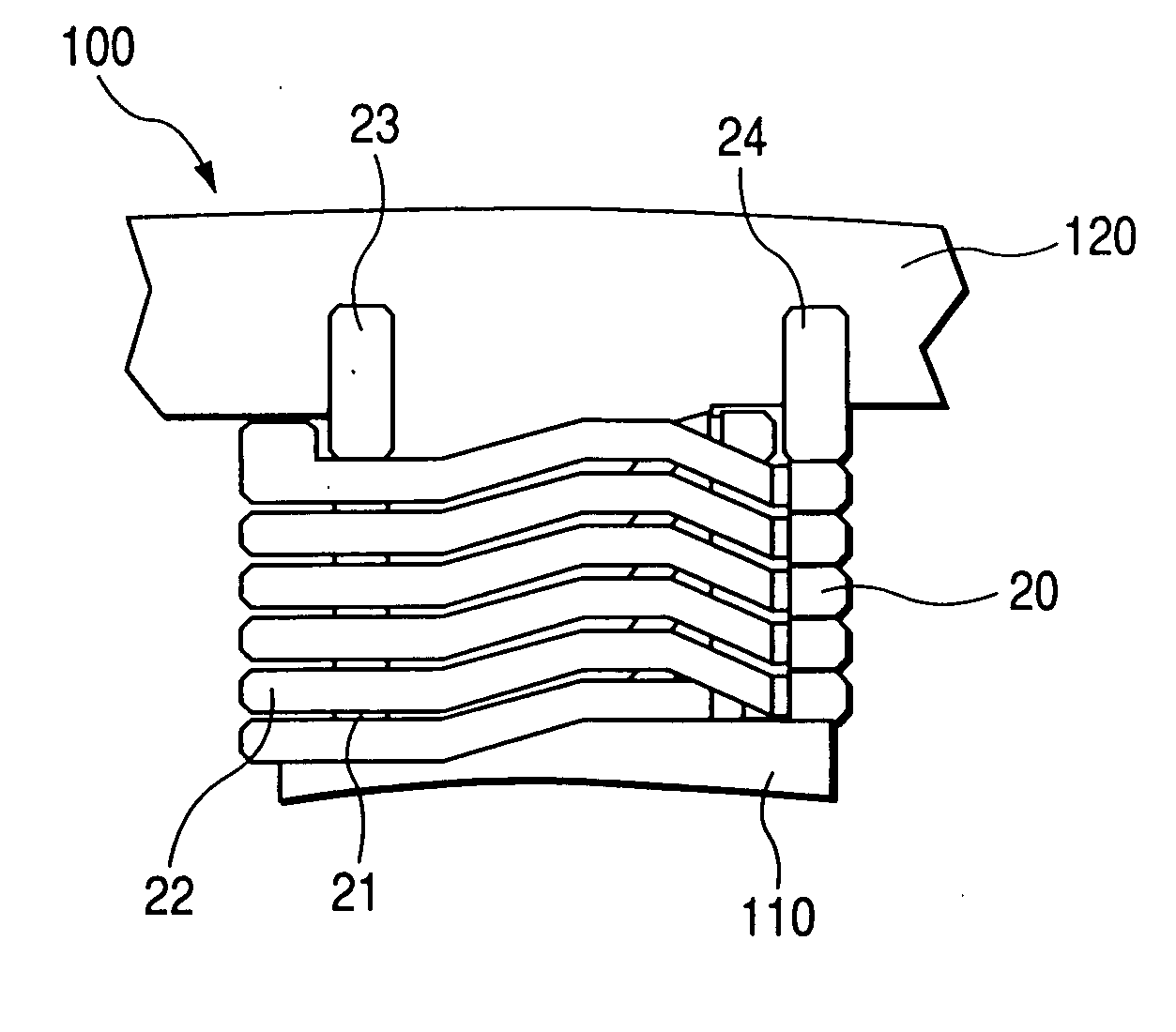Concentrated winding stator coil for an electric rotary machine
a stator coil and electric rotary machine technology, which is applied in the direction of transformers/inductance coils/windings/connections, transformers/inductance details, etc., can solve the problems of complex installation work for the rotor, wire contact with the rotor or the rotor, etc., to reduce the difference, suppress the increase in size and length of the electric rotary machine, and minimize the axial length of the stator
- Summary
- Abstract
- Description
- Claims
- Application Information
AI Technical Summary
Benefits of technology
Problems solved by technology
Method used
Image
Examples
first embodiment
Overall Structure
[0044] A concentrated winding stator having serial / parallel proximal end extraction type two-layer winding coils in accordance with a first embodiment of the present invention will be explained with reference to FIG. 1 showing a wiring arrangement and FIG. 2 partly showing a front view of the stator. A stator core 100 consists of a total of eighteen teeth 110 and a single core back 120. The stator core 100 is arranged by multilayered electromagnetic steel plates. The stator core 100 has an assembled core structure, although FIG. 2 does not show the details of the assembled core structure.
[0045] Each tooth 110 protrudes inward in the radial direction from an inner cylindrical surface of the core back (i.e. yoke) 120. The teeth 110 are disposed at constant angular pitches in the circumferential direction. Each tooth 110 has a partially cylindrical surface located at the radial inner side thereof so as to confront with a rotor (not shown). Tooth coils 20 are wound ar...
second embodiment
[0068] A winding stator coil in accordance with a second embodiment of the present invention will be explained with reference to FIG. 5 which schematically shows one tooth coil 20 fixed to the stator core. FIG. 5 shows an arrangement for the first-layer bus bar group 81, the second-layer bus bar group 82, the third-layer bus bar group 83, the fourth-layer bus bar group 91, the fifth-layer bus bar group 92, and the sixth-layer bus bar group 93 respectively shown in FIG. 4.
[0069] More specifically, the bus bar group 81 consists of the first-layer bus bars 352, 353, 38, 355, 356, and 39 shown in FIG. 4. The bus bar group 82 consists of the second-layer bus bars 362, 363, 365, and 366 shown in FIG. 4. The bus bar group 83 consists of the third-layer bus bars 372, 373, 375, and 376 shown in FIG. 4. Furthermore, the bus bar group 91 consists of the fourth-layer bus bars 351 and 354 shown in FIG. 4. The bus bar group 92 consists of the fifth-layer bus bars 361 and 364 shown in FIG. 4. The...
third embodiment
[0074] A winding stator coil in accordance with a third embodiment of the present invention will be explained with reference to FIG. 6 which schematically shows a modified arrangement of the bus bar groups 81-83 and 91-93. According to this embodiment, the bus bar groups 91 to 93 are disposed successively in the radial direction along the core back 120. The bus bar groups 81 to 83 are disposed successively in the radial direction and are positioned outside the bus bar group 91 to 93 in the axial direction. According to this arrangement, it is necessary to solve the problem of intersection of the radial extended portion of the bus bar being extended in the radial direction and connected to the lead wire of the tooth coil 20 and the circumferential extended portion of other bus bar being extended in the circumferential direction.
[0075] According to this and above-described embodiments, the external connecting terminals 35, 36, and 37 are disposed at appropriate positions so that the ...
PUM
| Property | Measurement | Unit |
|---|---|---|
| circumferential width | aaaaa | aaaaa |
| axial length | aaaaa | aaaaa |
| length | aaaaa | aaaaa |
Abstract
Description
Claims
Application Information
 Login to View More
Login to View More - R&D
- Intellectual Property
- Life Sciences
- Materials
- Tech Scout
- Unparalleled Data Quality
- Higher Quality Content
- 60% Fewer Hallucinations
Browse by: Latest US Patents, China's latest patents, Technical Efficacy Thesaurus, Application Domain, Technology Topic, Popular Technical Reports.
© 2025 PatSnap. All rights reserved.Legal|Privacy policy|Modern Slavery Act Transparency Statement|Sitemap|About US| Contact US: help@patsnap.com



